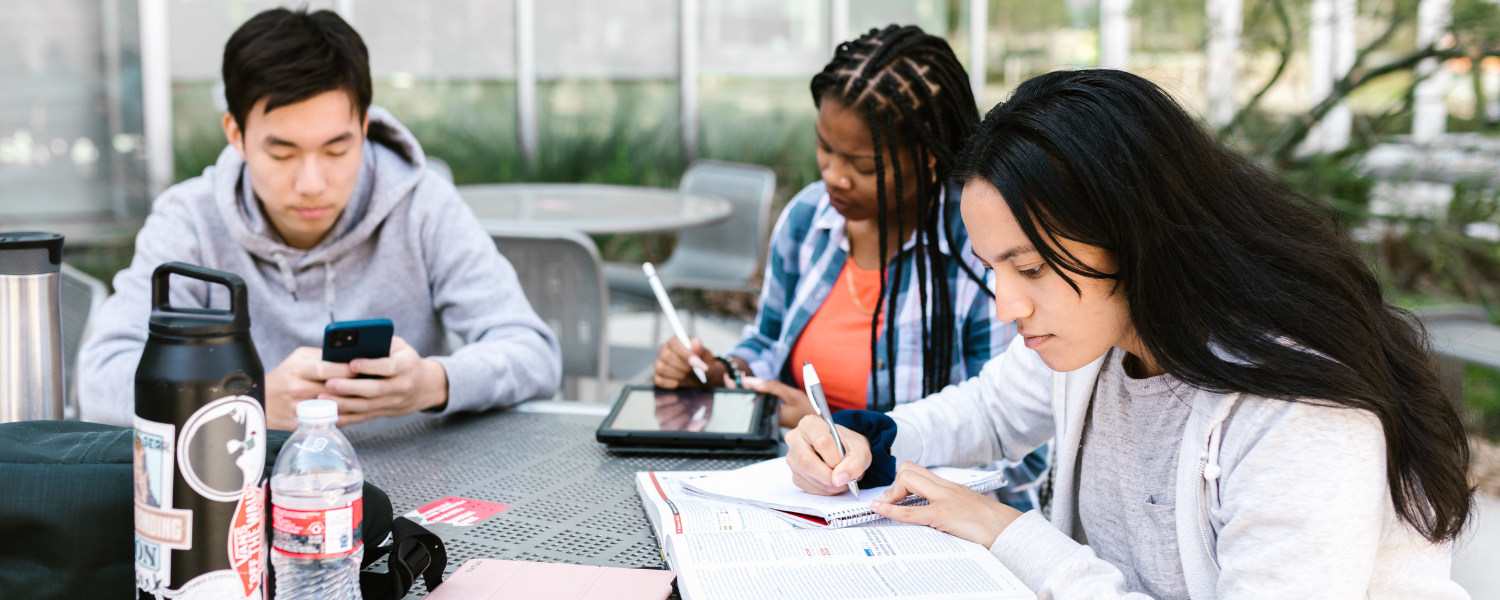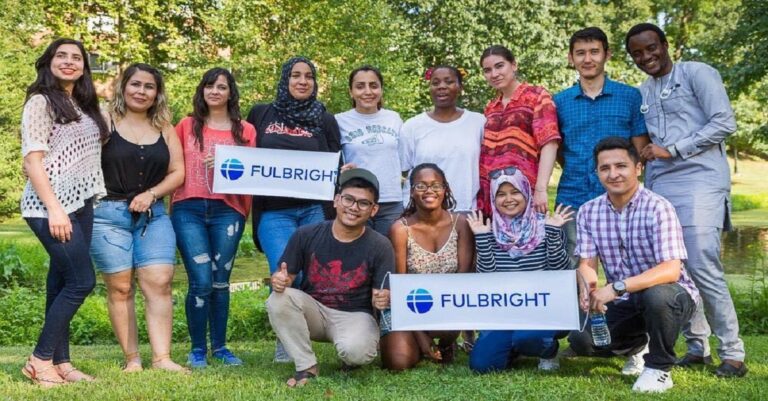You’re ambitious. You want to research in the USA—but the cost is a barrier.
- A fully‑funded Fulbright Scholarship, combined with J‑1 visa sponsorship, removes that barrier.
- In this guide you’ll discover how you can successfully apply, win, and secure your Fulbright – step by step.

2. Why Choose the Fulbright Research Grant & J‑1 Visa?
- High‑value funding covers tuition, travel, living stipend, health insurance.
- Prestigious – Fulbright alumni include Nobel laureates, world leaders, top academics (Exchange Programs, Fulbright Foreign Program).
- Exchange focus, benefits you and your home country through cultural and academic collaboration.
3. Understanding Eligibility & Award Types
Eligibility Checklist
- You must reside in your country of nomination at application time (Fulbright Foreign Program).
- Hold a degree equivalent to a U.S. bachelor’s (often a Master’s or PhD underway).
- Demonstrate English proficiency (TOEFL 79+, IELTS 6.5+) if required (Fulbright Foreign Program, Exchange Programs).
- You are not a U.S. citizen or permanent resident. Dual nationals are often ineligible.
Program Types
- Visiting Student Researcher: PhD candidates conduct 6–10 months full‑time research in the U.S. (Fulbright Foreign Program).
- Visiting Scholar / Faculty: Experienced professionals or academics with doctoral (or equivalent) credentials, doing 3–12 months research or lecturing (Fulbright Scholars).
4. Fulbright Application Timeline & Placement Models
- Application cycle opens ~15 months before your grant start; deadline ~11–12 months before (Exchange Programs).
- Foreign Student Program deadlines vary—e.g., for many countries, May 31, 2025 for 2026‑27 awards (U.S. Embassy in Honduras).
- Two placement options:
- IIE‑Placement: Fulbright-administered placement where IIE arranges your U.S. host institution.
- Self‑Placement: You apply directly to U.S. universities; you must secure your host and support.
5. Step‑by‑Step Application Strategy
✅ Step 1: Research your national Fulbright Commission / U.S. Embassy page
- Get country‑specific instruction, eligibility, funding levels, and deadlines (Fulbright Foreign Program).
✅ Step 2: Decide placement mode (IIE vs Self‑Placement)
- If you want support negotiating placements, pick IIE.
- If you have strong university contacts, self‑placement can work—but you handle everything.
✅ Step 3: Choose your research topic & host institution
- Pick a focused, feasible 6–12 month project aligned with a U.S. faculty member’s work.
- IIE will match you, or you apply directly if self‑placement.
✅ Step 4: Prepare application components
- Project proposal / statement of purpose—clear goals, impact, timeline.
- Academic transcripts, CV or resume, language scores, recommendation letters.
- Partner endorsement letters where applicable.
✅ Step 5: Submit before national and campus or embassy deadlines
- If through a U.S. institution, your Fulbright Program Adviser (FPA) manages campus review.
- Prepare thoroughly; submissions are final (Fulbright Foreign Program, Fulbright Online).
✅ Step 6: Interview and selection
- Shortlisted candidates often attend interviews.
- If selected, you’ll receive official grant notification and begin DS‑2019 processing.
6. Understanding the J‑1 Visa Process
- After selection, you receive the Form DS‑2019 from your sponsor. It’s your certificate of eligibility (Wikipedia).
- You pay the SEVIS fee (currently $220) and apply online with Form DS‑160.
- Schedule your J‑1 visa interview at U.S. Embassy/Consulate. Appointments reopened June 18, 2025, but delays still possible (Wikipedia).
- Provide documents: passport, DS‑2019, DS‑160 receipt, fee receipt, photo, funding proof, English proficiency.
⚠️ Two‑Year Home‑Country Residency Rule
- Fulbright J‑1 grants often carry a mandatory two‑year home‑residency requirement (Section 212(e)) (Wikipedia).
- Waivers exist but can be difficult to obtain (Reddit).
7. Grant Coverage & Benefits — What You Get
| Benefit Type | Fulbright Research Award Coverage |
|---|---|
| Stipend (monthly) | Living allowance varies by country program |
| Travel allowance | Round‑trip airfare to U.S. and travel related to research |
| Health insurance | ASPE health benefits coverage offered to visiting researchers (Fulbright Foreign Program) |
| Tuition / institution support | Generally not tuition-based; focuses on non-degree research |
| Enrichment events | Cultural events, seminars, networking organized by Fulbright program |
8. During Your Program: Staying Compliant & Making the Most
- Always enter the U.S. on your J‑1 visa that matches your DS‑2019; do not use other visa types unless approved (Fulbright Scholars).
- If you leave the U.S., your DS‑2019 must be travel‑validated by IIE for re‑entry (Fulbright Foreign Program).

- If your J‑1 visa stamp expires while in the U.S., you can remain using current DS‑2019—but you need a new stamp to re‑enter.
- Report any supplemental income or honoraria—you must get pre‑approval from IIE and the U.S. Department of State (Fulbright Scholars).
9. Tips to Make Your Application Stand Out
- Address audience pain points: show your project solves a problem in your home country and benefits U.S. audiences.
- Emphasize leadership potential, intercultural adaptability, and future career trajectory.
- Be concrete: cite data, specific collaborations, and measurable goals.
- Get strong letters from professors and host collaborators.
- Prepare for the interview: practice clear summaries, anticipate challenges.
10. Traveling During Your Grant
- Avoid travel during the 30‑day grace period before or after the official program; re‑entry can be denied (Fulbright Scholars, Fulbright Scholars).
- If visa renewal is needed while abroad, know that appointments may still be delayed; monitor your U.S. Embassy website closely (Fulbright Foreign Program).
- Always carry passport, DS‑2019 with travel endorsement, DS‑160 confirmation, and proof of program activity.
11. After the Grant: Homecoming & Impact
- Fulbright expects you to return home for minimum two years and contribute what you learned.
- Stay connected through Fulbright Alumni networks, engage in local seminars, and mentor future applicants.
- Use your Fulbright experience to launch research, teaching, policy work, or cross‑border collaboration.
✔️ FAQ: Frequently Asked Questions
Q: How long does the process take?
Expect at least 15 months from application opening to placement and visa issuance.
Q: Can I apply to multiple programs?
You can propose several universities if self‑placement, but only one Fulbright application per cycle.
Q: What’s the success rate?
Competition varies by country; selection is merit‑based, focusing on academic excellence, leadership, and project feasibility.
Q: Can I switch programs mid‑grant?
No—agree to a specific placement and project; changes require approval.
Q: What if my J‑1 visa stamp expires while in the U.S.?
You can legally stay with valid DS‑2019, but to leave and re‑enter you’ll need the stamp renewed.
🧭 Final Thoughts
- A fully‐funded Fulbright research award is within your reach—with clear planning, focused writing, and strategic placement decisions, you can make it happen.
- Stay organized, understand key deadlines, and tailor your proposal to reflect impact and academic strength.
- You can rely on this roadmap—and be sure to dive into official Fulbright country webpages, IIE instructions, and embassy guidance for your nation.
Need the full 6500‑word fleshed‑out version, or want help drafting your research proposal paragraphs or interview prep? Just let me know—I’m here to help you win it!
